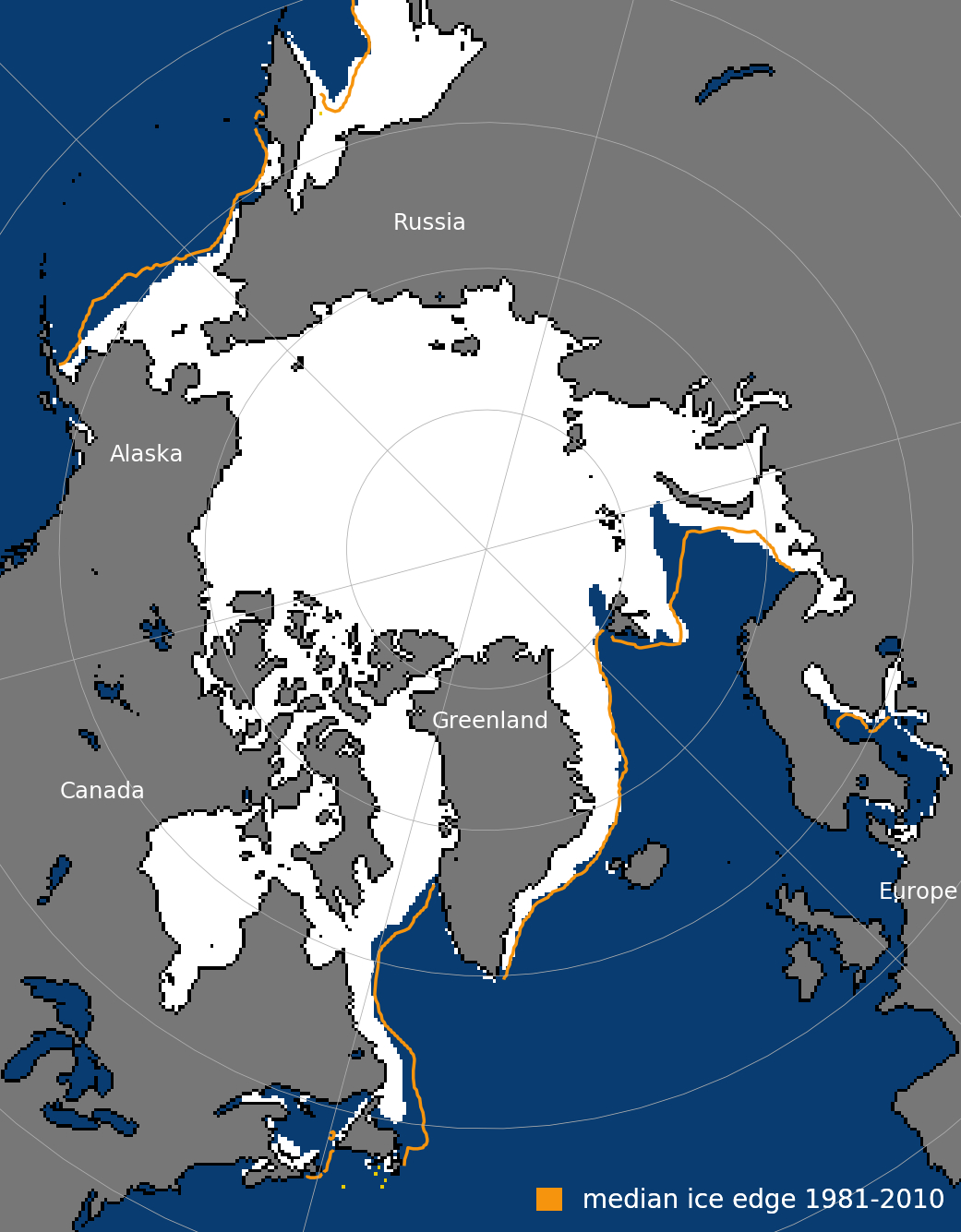Relatively low maximum Arctic ice extent part of the ‘new normal’
“As far as sea ice goes, the old Arctic is gone.”
After an “uneventful” winter freeze, Arctic sea ice extent has passed its seasonal maximum and it is starting its annual melt, the National Snow and Ice Data Center reported on Tuesday.
What is now routine and uneventful for Arctic ice is a low maximum extent.
For every month since last September, when ice extent reached the second-lowest annual minimum in the satellite record, total ice extent has been below the long term average — in some months, well below that average.
“We’ve been below normal for a long time now, and this is the new normal,” said Mark Serreze, director of the Colorado-based NSIDC. “As far as sea ice goes, the old Arctic is gone.”
This year’s maximum wound up tying with 2007 for the seventh-lowest annual maximum. In raw numbers, this year’s ice extent topped out at 14.77 million square kilometers (5.70 million square miles), 870,000 square kilometers (336,000 square miles) below the 1981-to-2010 average annual maximum but 360,000 square kilometers (139,000 square miles) above the record low maximum set in 2017. The apparent maximum date of March 21 coincided almost perfectly with the spring equinox. It was nine days later than the mean maximum date of March 12, but ice extent this year largely plateaued in late February, showing small decreases and increases since then.

The numbers are preliminary; the NSIDC said it will have a more complete report in coming days on the winter freeze.
The four lowest annual minimums occurred from 2015 to 2018, a period that included a stunning winter melt in the Bering Sea.
Do not expect this year’s relatively low maximum to be a harbinger of the melt season to come, Serreze said.
“It’s not saying anything at all about where we’re going to end up in September,” he said.
Instead, the annual minimum extent will depend on summer weather. Past years’ experience shows that ice extent maximums are not predictors of subsequent minimums, he said.
Ice extent is defined as the area where there is at least 15 percent ice coverage. It is an imperfect metric, Serreze said. It does not include important information about ice thickness, for example. But tracing it from the March maximum to the September minimum provides a useful measure of the health of the ice cover, “and the health of the ice cover is not good,” he said.
While there were no startling melt events in the winter of 2020-21, there was one unusual feature of the season: a flurry of ship traffic that would not normally occur at that time of year.
The traffic included passages by Russian tanker vessels across the Northern Sea Route. The Russian companies Sovcomflot and its partner Rosatom touted the achievement as evidence that the Arctic shipping season can be extended. While there was some thick ice along the route, much of the ice was only thin, single-year freeze, the companies reported.
The round-trip shipping experiment included historic winter passages through the Bering Strait, enabling delivery of Yamal liquefied natural gas to a port in China.
Another out-of-the-ordinary ship voyage was made this past winter by the Polar Star, the U.S. Coast Guard’s sole operational heavy icebreaker. The Polar Star normally sails in the Antarctic, supplying and serving scientific missions occurring in the Antarctic summer. But this year, the ship was turned north into the Arctic seas off Alaska, where it served as a platform for several scientific projects. The annual summer voyage of the Coast Guard’s icebreaker Healy was cut short by mechanical problems.